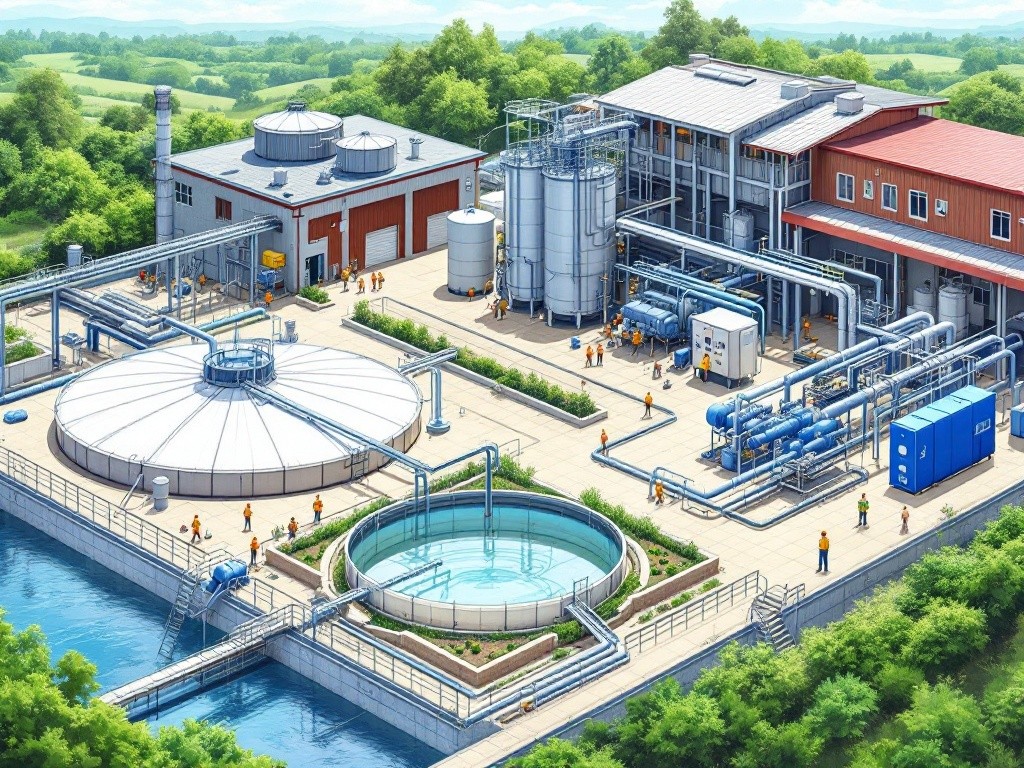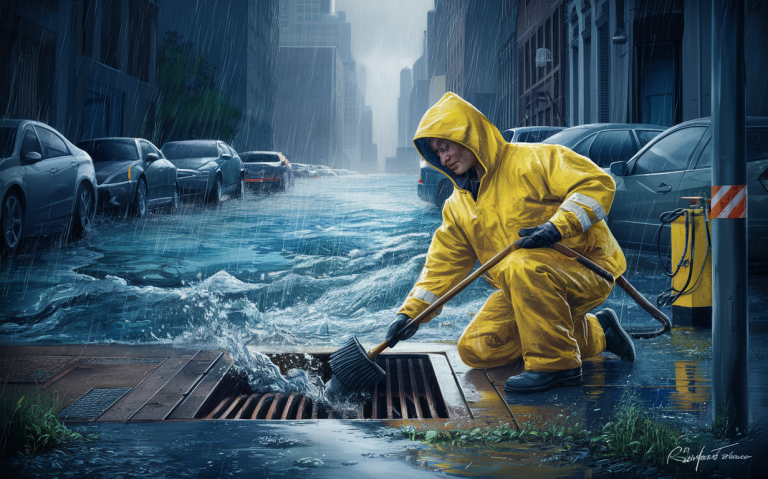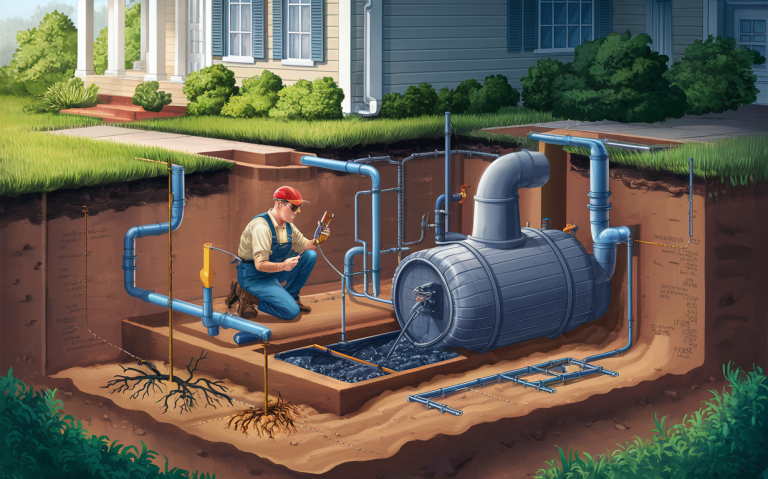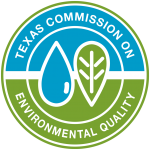Industrial Wastewater Treatment: Protecting Our Waters
Key Takeaways
- Industrial wastewater treatment is vital for removing pollutants and contaminants from water used in manufacturing processes
- Common methods include physical, chemical, and biological treatments
- Industries like chemical manufacturing, food processing, and oil refining generate large volumes of wastewater
- Proper treatment helps companies comply with regulations and reduce environmental impact
- Advanced technologies like membrane filtration are improving treatment efficiency
- Water reuse and recycling are becoming more common to conserve resources
- Regular monitoring and maintenance of treatment systems is essential
Industrial wastewater treatment is the process of cleaning and purifying water that has been contaminated by industrial or manufacturing activities before it is released back into the environment or reused. This critical process helps protect water resources, ecosystems, and public health from harmful pollutants generated by various industries.
The Importance of Treating Industrial Wastewater
Industrial wastewater often contains a wide range of contaminants that can cause serious environmental and health issues if left untreated. These may include heavy metals, chemicals, oils, organic compounds, and other pollutants specific to certain manufacturing processes. Septic Tank Filter Installation and Cleaning
Proper treatment of this wastewater is essential for several reasons:
- Environmental protection: Untreated industrial wastewater can contaminate rivers, lakes, and groundwater, harming aquatic life and ecosystems.
- Public health: Many industrial pollutants are toxic to humans and can enter the food chain or drinking water supplies if not removed.
- Regulatory compliance: Most countries have strict regulations on industrial wastewater discharge, requiring treatment before release.
- Resource conservation: Treated wastewater can often be recycled or reused, reducing the strain on freshwater resources.
- Cost savings: Effective treatment can allow companies to reuse water, lowering their overall water consumption and costs.
By implementing proper wastewater treatment systems, industries can significantly reduce their environmental footprint and operate more sustainably.
Common Sources of Industrial Wastewater
Industrial wastewater comes from a wide variety of manufacturing and processing activities. Some of the major industries that generate significant amounts of wastewater include:
Chemical manufacturing
The chemical industry produces a vast array of products, from basic chemicals to pharmaceuticals. This sector generates wastewater containing various organic and inorganic compounds, solvents, and potentially toxic substances.
Food and beverage processing
Food processing plants produce wastewater high in organic matter, fats, oils, and grease. This can include waste from washing, blanching, pasteurization, and other food preparation processes.
Textile manufacturing
The textile industry uses large amounts of water for dyeing, printing, and finishing fabrics. This wastewater often contains dyes, detergents, and other chemicals.
Oil and gas refining
Refineries generate wastewater contaminated with hydrocarbons, sulfides, and other petroleum byproducts. Proper treatment is crucial to prevent these pollutants from entering water bodies.
Metal processing and fabrication
Metalworking industries produce wastewater containing heavy metals, oils, and acidic or alkaline solutions used in various processes like plating and surface treatment.
Pulp and paper production
This industry generates wastewater with high levels of organic matter, fibers, and chemicals used in the pulping and bleaching processes.
Understanding the specific contaminants present in each industry’s wastewater is crucial for designing effective treatment systems.
Industrial Wastewater Treatment Methods
Treating industrial wastewater typically involves a combination of physical, chemical, and biological processes. The exact treatment methods used depend on the type and concentration of contaminants present. Here are some common treatment approaches:
Physical treatment methods
Physical treatments remove solid particles and other visible contaminants from wastewater. These methods include: Benefits of Septic Tank Filter Installation and Cleaning
- Screening: Large debris is removed using screens or sieves.
- Sedimentation: Suspended particles are allowed to settle out of the water in tanks or basins.
- Flotation: Air bubbles are introduced to help lighter particles rise to the surface for removal.
- Filtration: Water passes through filters to remove fine particles and some dissolved contaminants.
Chemical treatment methods
Chemical treatments involve adding specific chemicals to react with and remove contaminants. Common chemical treatments include:
- Coagulation and flocculation: Chemicals are added to cause small particles to clump together for easier removal.
- pH adjustment: Acids or bases are added to neutralize the wastewater.
- Oxidation: Strong oxidizing agents like chlorine or ozone are used to break down organic contaminants.
- Precipitation: Chemicals are added to cause dissolved metals to form solid particles that can be filtered out.
Biological treatment methods
Biological treatments use microorganisms to break down organic contaminants in wastewater. These methods include:
- Activated sludge: Bacteria are used to consume organic matter in aerated tanks.
- Trickling filters: Wastewater is sprayed over a bed of rocks or plastic media covered in bacteria that break down contaminants.
- Anaerobic digestion: Organic matter is broken down by bacteria in the absence of oxygen, producing biogas as a byproduct.
Advanced Wastewater Treatment Technologies
As regulations become stricter and water scarcity increases, many industries are turning to more advanced treatment technologies. These include:
Membrane filtration
Membrane technologies like reverse osmosis and nanofiltration can remove even very small contaminants, producing high-quality treated water suitable for reuse.
Advanced oxidation processes
These methods use combinations of oxidizing agents, UV light, and catalysts to break down difficult-to-treat organic compounds.
Electrochemical treatment
Electric current is used to remove metals and other contaminants from wastewater through processes like electrocoagulation and electrooxidation.
Bioremediation
Specialized microorganisms or plants are used to break down or absorb specific contaminants in wastewater.
These advanced technologies can achieve higher levels of treatment, allowing for water reuse in more applications.
Industrial Wastewater Recycling and Reuse
Many industries are now looking beyond just treating wastewater for discharge and are exploring ways to recycle and reuse it within their facilities. This approach, often called “zero liquid discharge,” can significantly reduce a company’s water consumption and wastewater generation.
Common applications for recycled industrial wastewater include:
- Cooling tower makeup water
- Boiler feed water
- Process water for manufacturing
- Landscape irrigation
- Dust control
Implementing water reuse systems often requires additional treatment steps to ensure the recycled water meets the quality requirements for its intended use. However, the long-term benefits in terms of water conservation and cost savings can be substantial.
Challenges in Industrial Wastewater Treatment
While effective treatment technologies exist, industrial wastewater treatment still faces several challenges:
Variability in wastewater composition: Industrial processes can produce wastewater with widely varying characteristics, making it difficult to design a single treatment system that works for all situations.
- Emerging contaminants: New chemicals and materials used in industry may require novel treatment approaches.
- Energy consumption: Many treatment processes, especially advanced technologies, can be energy-intensive.
- Sludge management: Treatment processes often generate solid waste (sludge) that requires proper handling and disposal.
- Cost: Installing and operating effective treatment systems can be expensive, especially for smaller companies.
Addressing these challenges requires ongoing research and development of more efficient and cost-effective treatment technologies.
Regulatory Framework for Industrial Wastewater Treatment
In the United States, industrial wastewater discharge is regulated primarily by the Clean Water Act, enforced by the Environmental Protection Agency (EPA). The National Pollutant Discharge Elimination System (NPDES) permit program controls water pollution by regulating point sources that discharge pollutants into the waters of the United States.
Key aspects of the regulatory framework include:
- Effluent guidelines: The EPA sets industry-specific limits on the levels of pollutants that can be discharged.
- Pretreatment requirements: Industries that discharge to municipal sewage treatment plants may need to pre-treat their wastewater to meet local limits.
- Monitoring and reporting: Companies must regularly test their wastewater and report results to regulatory agencies.
- Best management practices: Guidelines for reducing pollutant discharge through process changes and good housekeeping.
Compliance with these regulations is mandatory, and violations can result in significant fines and legal consequences.
Best Practices for Industrial Wastewater Management
To effectively manage industrial wastewater, companies should consider the following best practices: Scheduled Maintenance Programs
- Conduct regular wastewater audits to identify sources of pollution and opportunities for reduction.
- Implement pollution prevention strategies to minimize wastewater generation at the source.
- Train employees on proper handling of chemicals and waste to prevent spills and contamination.
- Regularly maintain and upgrade treatment systems to ensure optimal performance.
- Explore opportunities for water reuse and recycling within the facility.
- Stay informed about changing regulations and emerging treatment technologies.
Develop a comprehensive wastewater management plan that addresses all aspects of generation, treatment, and disposal.
By following these practices, industries can improve their environmental performance and potentially reduce their water-related costs.
The Future of Industrial Wastewater Treatment
As water scarcity becomes a growing concern and environmental regulations tighten, the future of industrial wastewater treatment is likely to focus on:
- Water reuse and recycling: More industries will adopt closed-loop systems to minimize freshwater consumption.
- Resource recovery: Extracting valuable materials like metals or nutrients from wastewater streams.
- Smart systems: Using sensors, data analytics, and automation to optimize treatment processes.
- Green technologies: Developing more sustainable treatment methods with lower energy consumption and chemical use.
- Decentralized treatment: On-site treatment systems that allow for localized water reuse.
These trends will drive innovation in treatment technologies and approaches, helping industries become more water-efficient and environmentally friendly.
The Role of Wastewater Treatment in Sustainable Industry
Effective industrial wastewater treatment plays a crucial role in creating more sustainable industrial practices. By properly treating and managing wastewater, industries can:
- Protect local water resources and ecosystems
- Reduce their overall water consumption through reuse and recycling
- Recover valuable resources from waste streams
- Improve their public image and relationships with local communities
- Ensure compliance with current and future environmental regulations
As sustainability becomes increasingly important to consumers, investors, and regulators, effective wastewater management will be a key factor in an industry’s long-term success and viability.
Conclusion
Industrial wastewater treatment is a critical process for protecting our environment and conserving water resources. By implementing effective treatment systems and adopting best practices, industries can significantly reduce their environmental impact while potentially saving money through water reuse and resource recovery.
As water scarcity becomes more prevalent and regulations continue to tighten, the importance of proper industrial wastewater treatment will only grow. Continued innovation in treatment technologies and approaches will be essential to meet these challenges and move towards more sustainable industrial practices.
By prioritizing wastewater treatment and management, industries can play a crucial role in protecting our water resources for future generations while improving their efficiency and sustainability. For more information, you can visit our website or contact us.

| Industry | Common Contaminants | Typical Treatment Methods |
|---|---|---|
| Chemical Manufacturing | Organic compounds, solvents, acids, bases | Chemical oxidation, activated carbon adsorption, neutralization |
| Food Processing | Organic matter, fats, oils, grease | Dissolved air flotation, anaerobic digestion, activated sludge |
| Textile Manufacturing | Dyes, detergents, fibers | Coagulation/flocculation, advanced oxidation, membrane filtration |
| Oil and Gas Refining | Hydrocarbons, sulfides, phenols | Oil-water separation, air stripping, biological treatment |
| Metal Processing | Heavy metals, acids, cyanides | Chemical precipitation, ion exchange, electrochemical treatment |
| Treatment Technology | Advantages | Disadvantages |
|---|---|---|
| Membrane Filtration | High-quality treated water removes a wide range of contaminants | High energy consumption, membrane fouling |
| Biological Treatment | Effective for organic contaminants, low operating costs | Sensitive to toxic substances, requires careful monitoring |
| Advanced Oxidation | Can treat recalcitrant organics, disinfection capability | High energy and chemical costs, potential for byproduct formation |
| Electrochemical Treatment | Effective for metals removal, no chemical addition | High energy consumption, electrode replacement costs |
| Adsorption (e.g., activated carbon) | Removes a wide range of organics, simple operation | Regular media replacement is required, and disposal of spent media |






 Texway Wastewater Services is a septic, wastewater, and excavation company based out of Burleson, Texas and serving the surrounding areas. We specialize in
Texway Wastewater Services is a septic, wastewater, and excavation company based out of Burleson, Texas and serving the surrounding areas. We specialize in